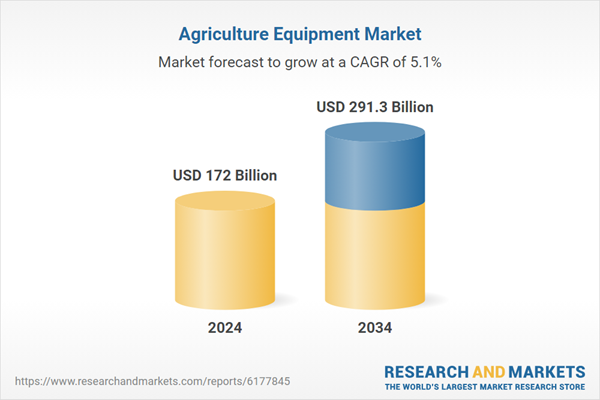The growth reflects a significant shift toward mechanized solutions across the agricultural landscape, as farmers aim to boost efficiency, lower dependence on manual labor, and meet rising global food demands. Small and medium-scale farmers in emerging economies are increasingly investing in modern tools such as harvesters, tillers, and tractors. At the same time, the push for climate-smart farming is reshaping how equipment is built and used. Precision tools, including variable-rate fertilizer sprayers and GPS-integrated seeders, enabling sustainable farming practices, while livestock and horticulture operations are demanding tailored technologies such as automated milking units, greenhouse climate systems, and compact orchard tractors.
Government-backed initiatives and infrastructure development programs are catalyzing the adoption of advanced equipment. In several developing regions, rural incentives for electric and solar-powered machinery and global efforts toward emissions reduction are actively transforming the agriculture equipment space, with automation and sustainability taking center stage.
In 2024, the farm tractor segment generated USD 89.9 billion. Tractors continue to serve as essential assets in agriculture by streamlining plowing, sowing, and transportation activities. Their widespread appeal is supported by technological progress, particularly the integration of automation, AI, and clean fuel capabilities that boost operational performance and meet sustainability goals. From autonomous machinery to low-emission powertrains, the demand for high-tech tractors is gaining momentum across all farming tiers.
The indirect distribution segment accounted for a 65.2% share in 2024, owing to the importance of local dealers and service infrastructure. These networks provide farmers with convenient access to equipment, after-sales support, and financing options. Indirect channels also play a critical role in executing government-supported procurement plans and subsidy allocations, making them vital to the agricultural machinery value chain.
North America Agriculture Equipment Market is anticipated to grow at a CAGR of 3.8% from 2025 through 2034. The U.S. market is witnessing increased adoption of cutting-edge agricultural technologies aimed at lowering costs and enhancing productivity. A combination of supportive policy frameworks and widespread adoption of precision farming tools continues to drive the demand for modern, sustainable equipment solutions.
Prominent players in the Global Agriculture Equipment Industry include CNH Industrial, Valmont Industries, Kubota, SDF Group, CLAAS, Mahindra & Mahindra, Alamo Group, AGCO, Deere & Company (John Deere), Argo Tractors, Escorts, Amazonen-Werke, JCB, China National Machinery Industry Corporation (Sinomach), and Bucher Industries. Major players in the agriculture equipment market are advancing through a mix of product innovation, global expansion, and sustainability-driven solutions. Companies are investing in smart technology integration, including AI-enabled controls, telematics, and precision sensors to improve machine efficiency and user experience. Many are introducing eco-friendly machinery powered by electric, hybrid, or low-emission fuel systems to align with climate goals.
Comprehensive Market Analysis and Forecast
- Industry trends, key growth drivers, challenges, future opportunities, and regulatory landscape
- Competitive landscape with Porter’s Five Forces and PESTEL analysis
- Market size, segmentation, and regional forecasts
- In-depth company profiles, business strategies, financial insights, and SWOT analysis
This product will be delivered within 2-4 business days.
Table of Contents
Companies Mentioned
The companies profiled in this Agriculture Equipment market report include:- AGCO
- Alamo Group
- Amazonen-Werke
- Argo Tractors
- Bucher Industries
- China National Machinery Industry Corporation (Sinomach)
- CLAAS
- CNH Industrial
- Deere & Company (John Deere)
- Escorts
- JCB
- Kubota
- Mahindra & Mahindra
- SDF Group
- Valmont Industries
Table Information
| Report Attribute | Details |
|---|---|
| No. of Pages | 167 |
| Published | September 2025 |
| Forecast Period | 2024 - 2034 |
| Estimated Market Value ( USD | $ 172 Billion |
| Forecasted Market Value ( USD | $ 291.3 Billion |
| Compound Annual Growth Rate | 5.1% |
| Regions Covered | Global |
| No. of Companies Mentioned | 16 |









